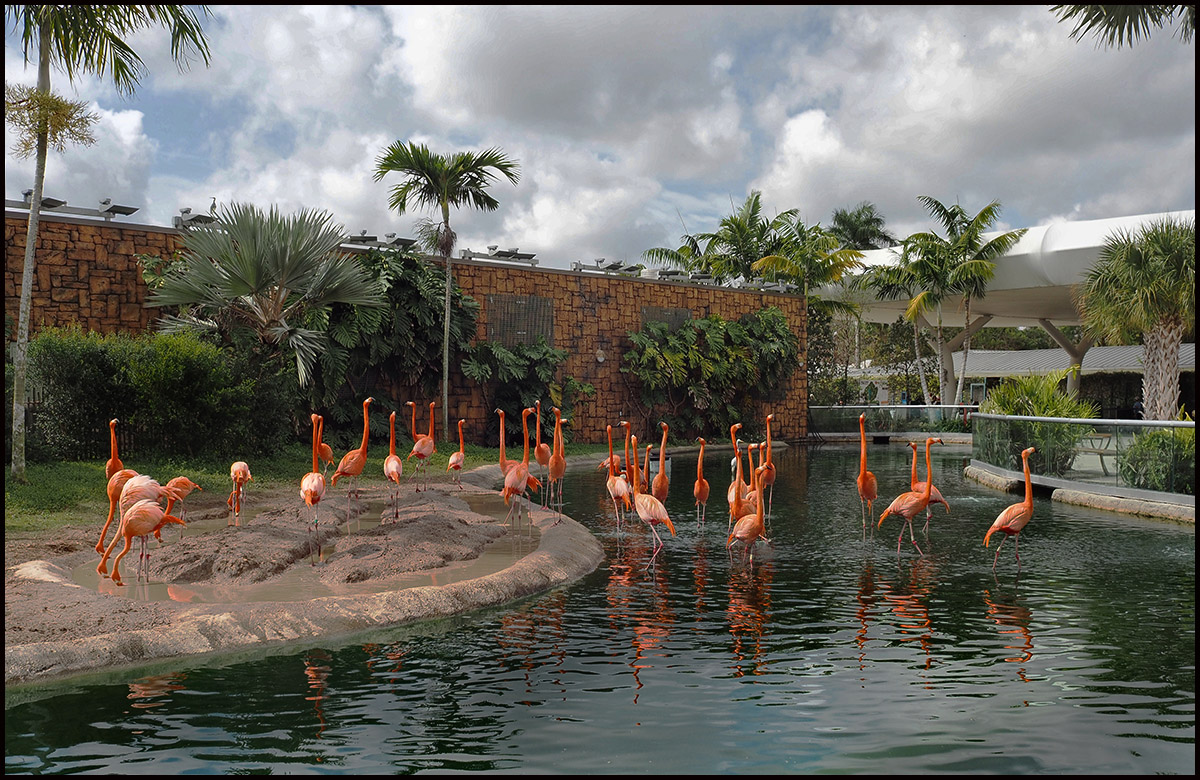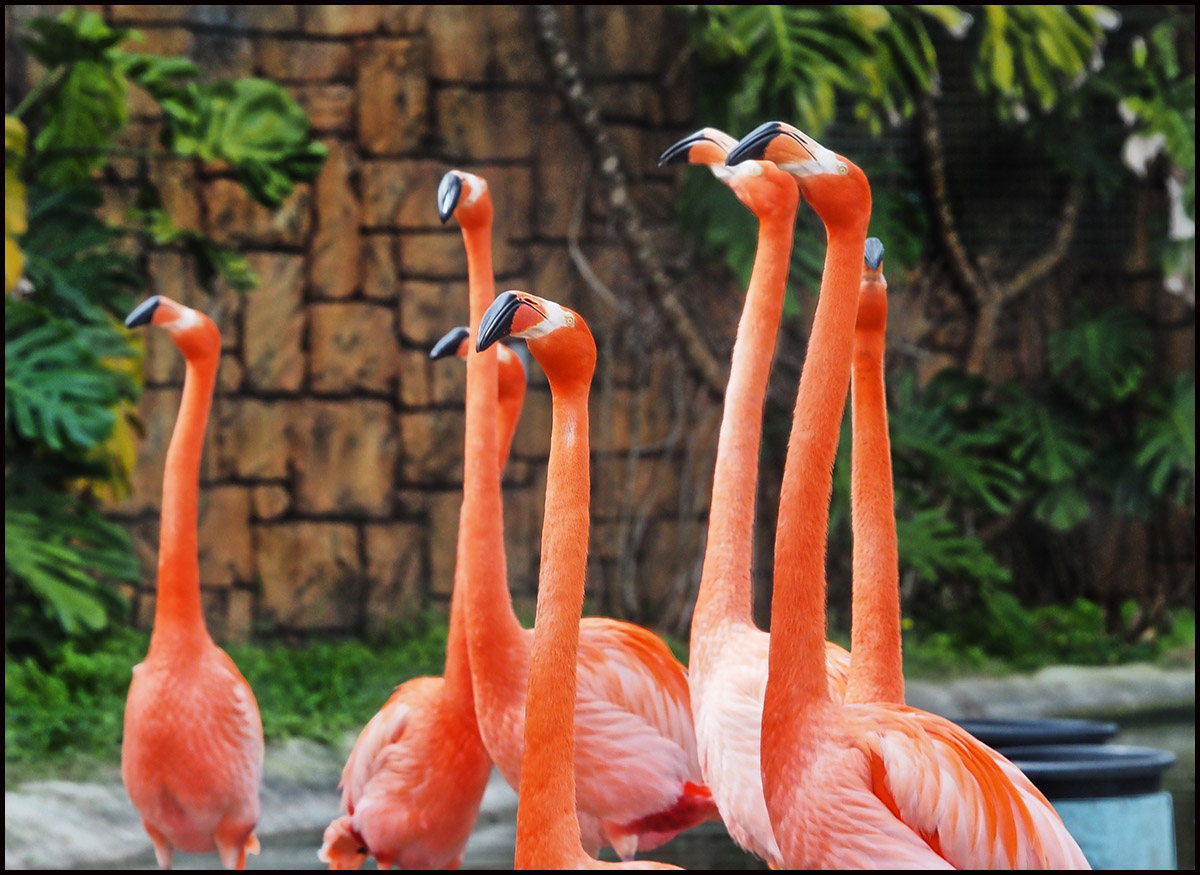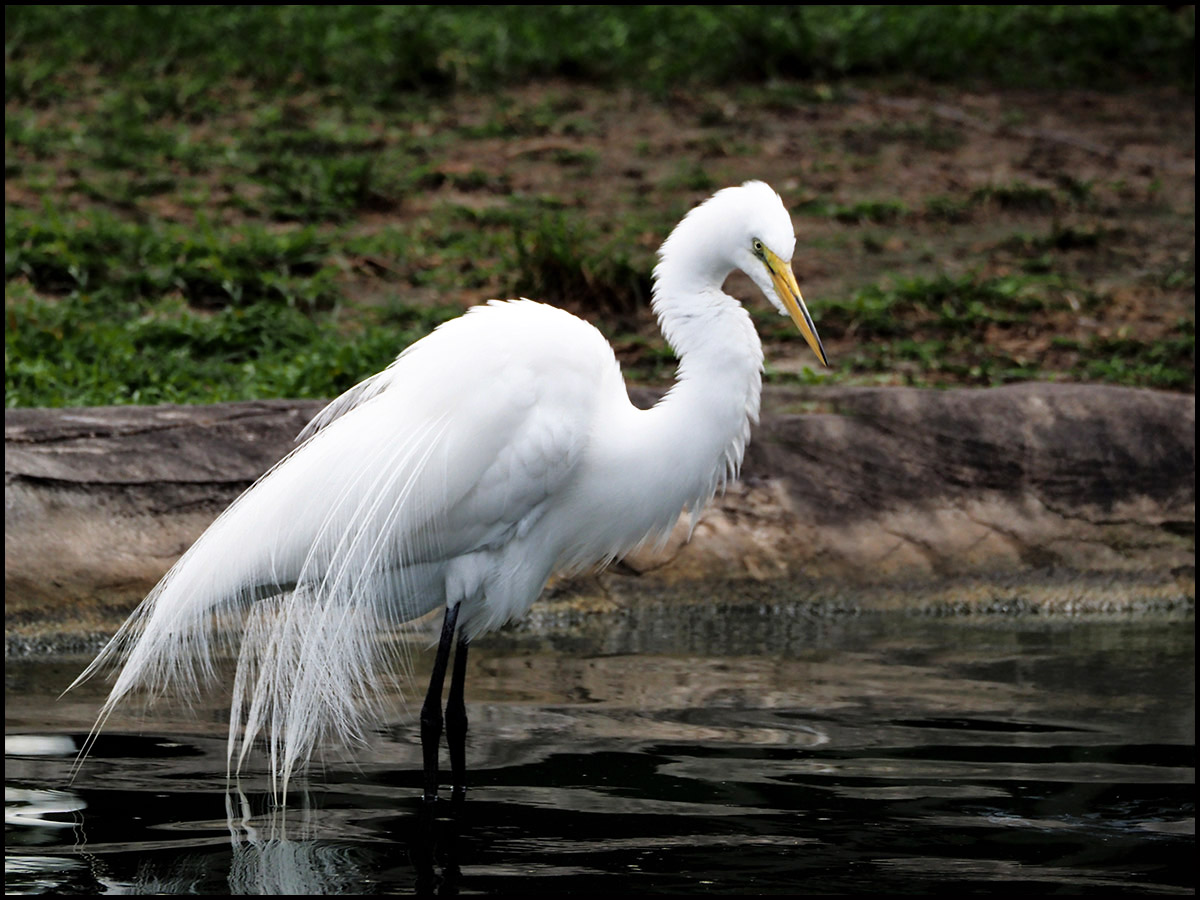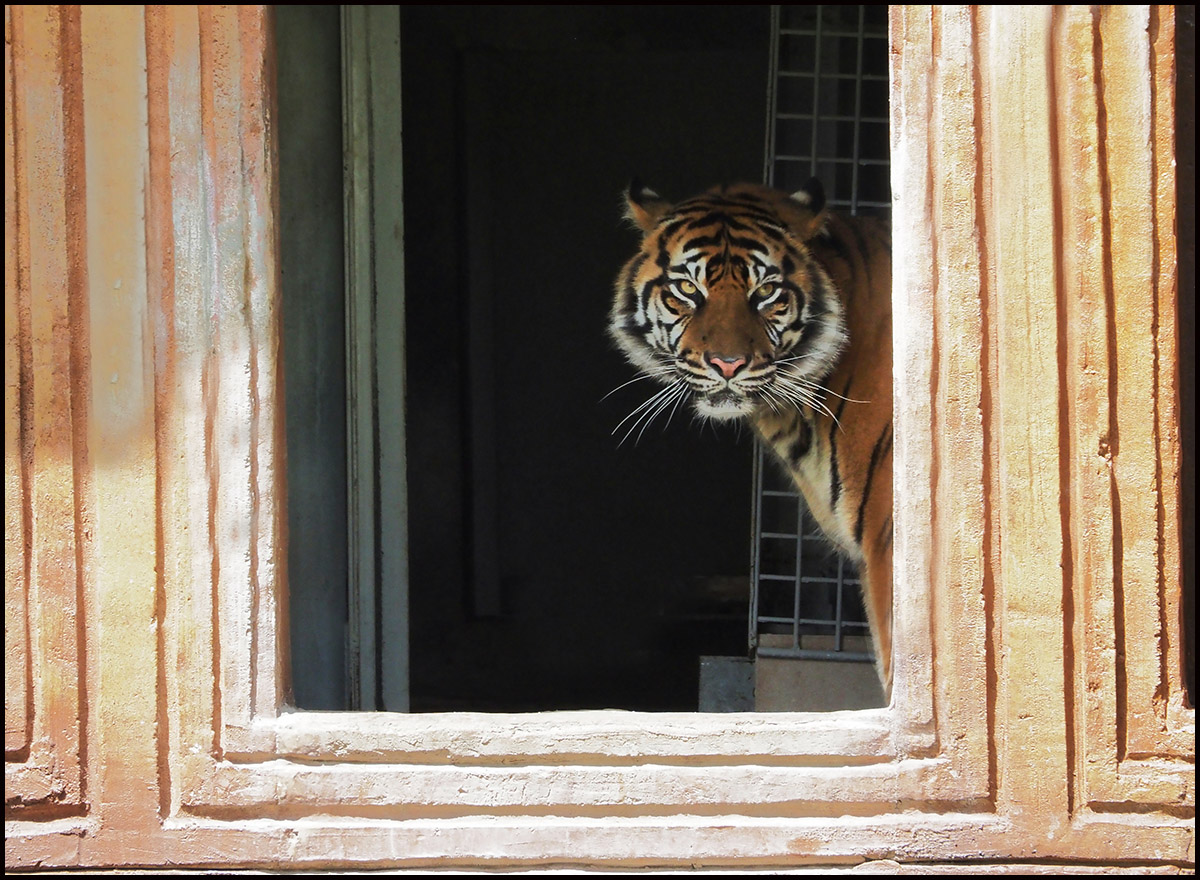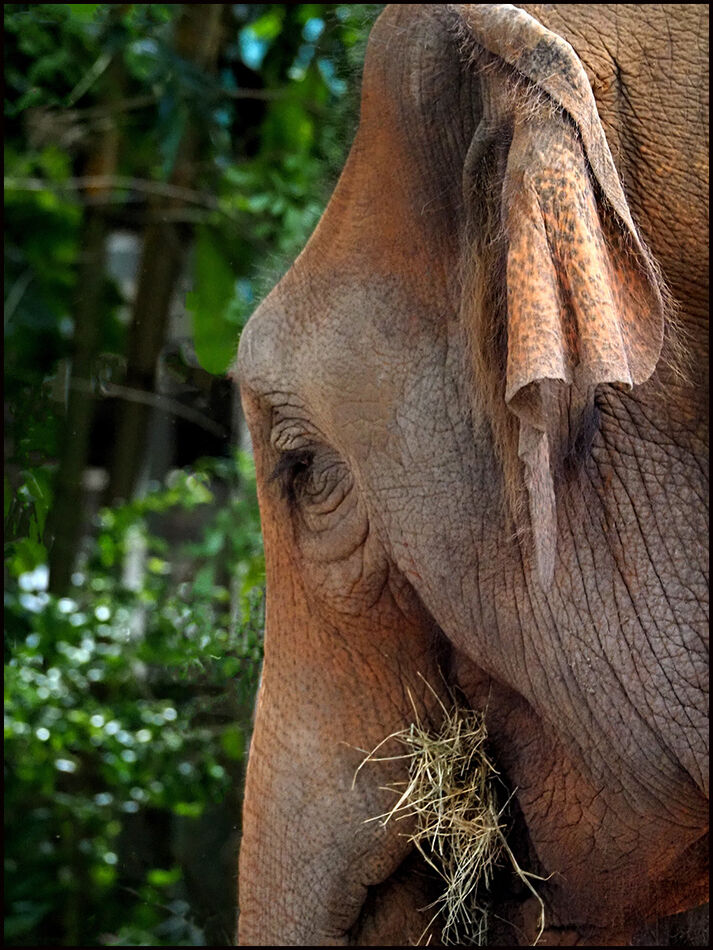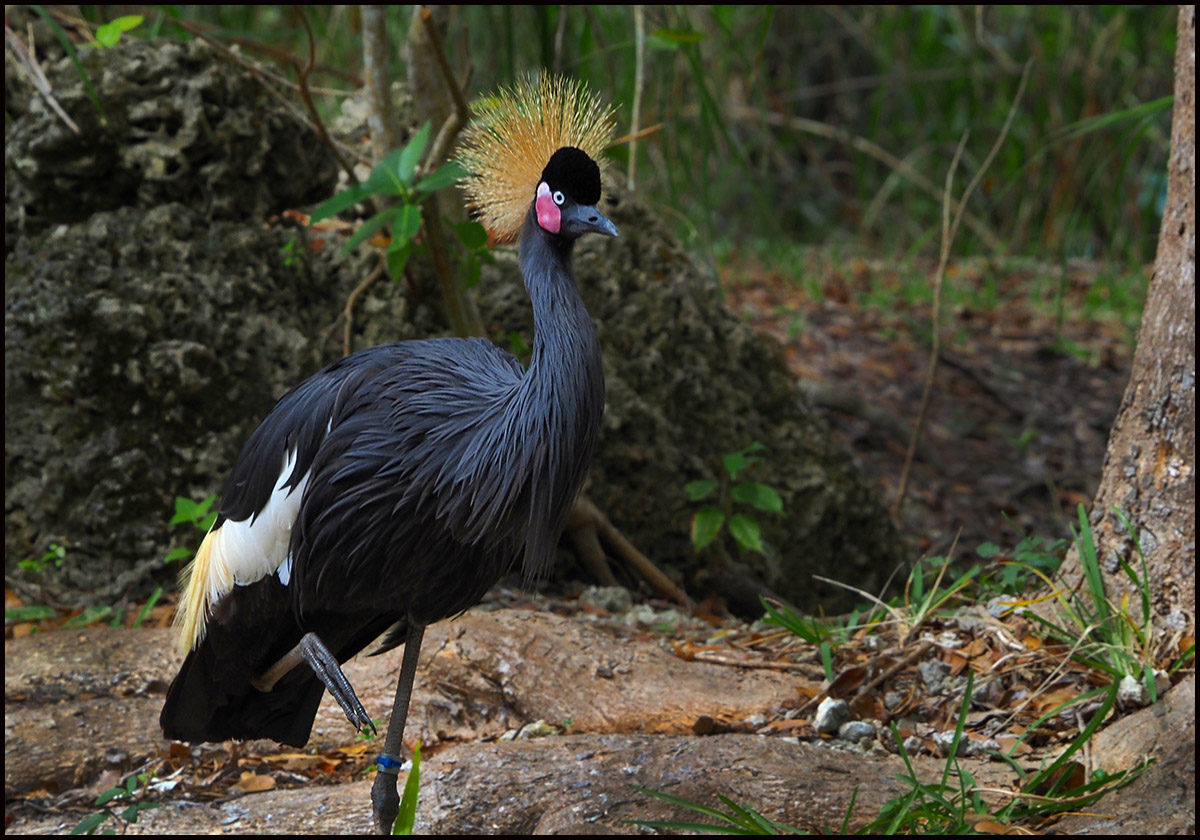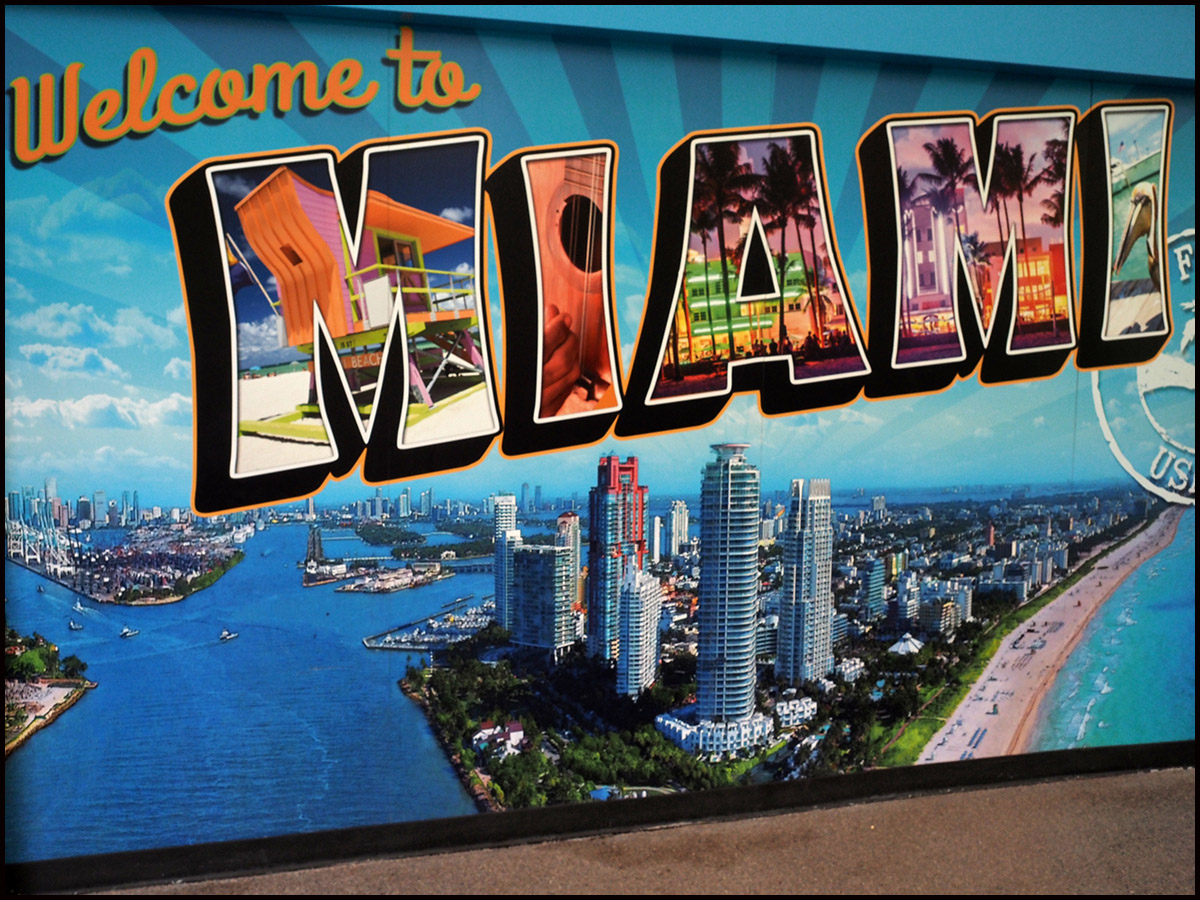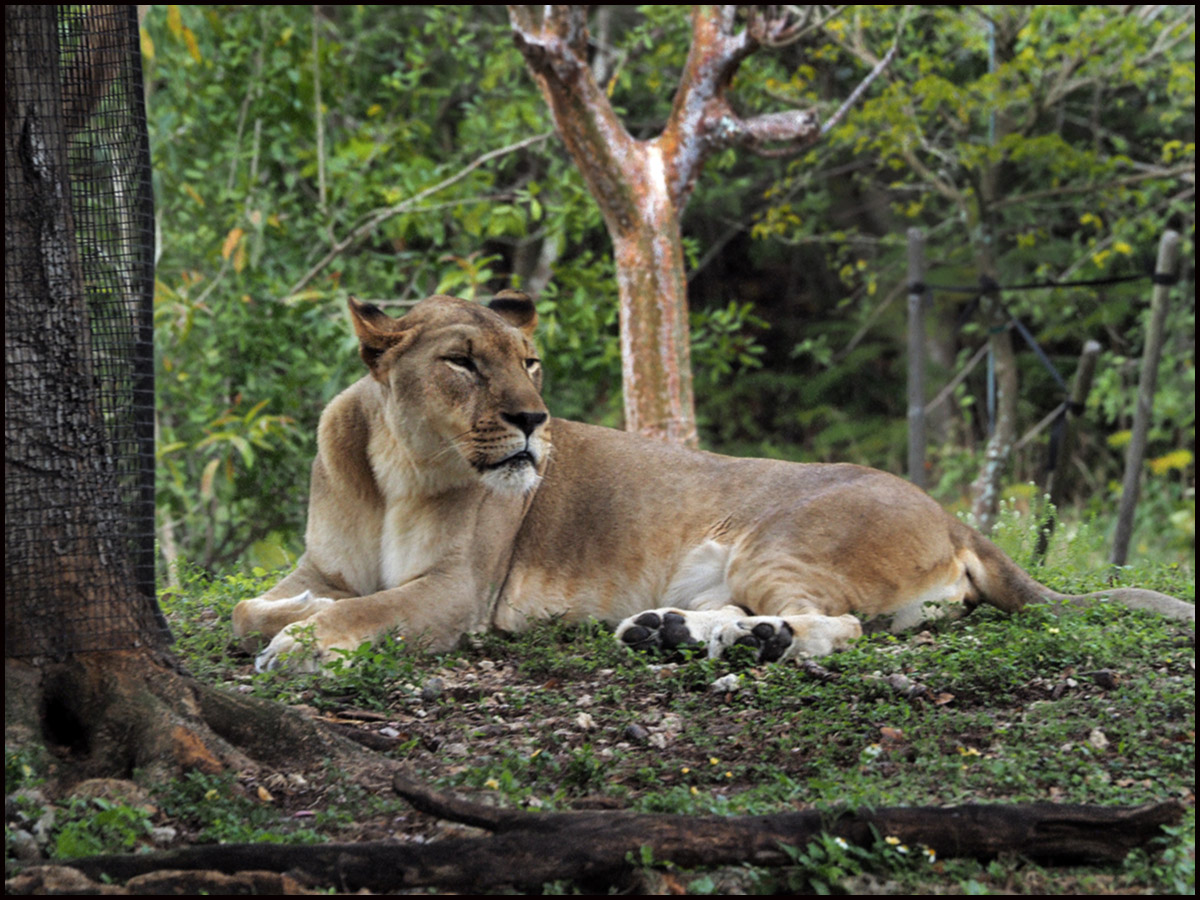Revisiting the Miami Metro Zoo.
Mar 6, 2024 05:34:58 #
I am not what you could call a wildlife photographer. My photographic efforts went to portraits that I rarely practice now and landscape photography which is what I really enjoy doing.
During my previous visit to the Miami Metro Zoo I made a newbie mistake, I took with me my new Olympus EM-5 Mk III without being familiar with its AF. A majority of the images I made that day were pretty soft as to be expected.
Auto ISO and Auto WB are new features to me, they worked as expected although I set my shutter speed too high in shutter priority resulting in the camera selecting apertures too close to wide open.
This is not precisely a bad move but it was for me not used to that shooting mode. I am in aperture priority most of the time.
I find the AF of my new Olympus kind of complicated compared to the AF of my Nikon bodies. It has taken me several days learning its many features which I do no master yet. The Olympus EM-5 Mk III is an excellent little camera that can easily be carried with a couple of lenses in a small bag without issues. It is a traveling photographer’s dream. I did not feel tired at the end of the day using it.
I took two lenses with me, the old 17mm f2.8 and the new 75-300 f4.8-6.7. Why Olympus selected such weird apertures for this tele zoom is beyond my understanding. With a full frame camera, a term improperly reserved for sensors the size of a 35mm negative, the lens behaves like a 150-600mm lens. The micro fourths thirds uses the whole sensor by default, isn’t that full frame? The same goes with APS sensors. It is not my intention to start arguments in favor or against those "cropped" sensors.
I still need practice to fully realize how the AF of this camera performs. During editing I had many keepers but many images were soft or out of focus. I am showing here some samples of what I did. If anyone here is using this camera I am open to suggestions regarding the settings and techniques that have best worked for you when using its AF for wildlife or birds in flight. I still have a lot to learn about wildlife and birds in flight.
Finally, it was a hot and humid day that made me stop often under the shade and drink plenty of water. I guess the animals were not that comfortable either because many of them were hiding. If visiting Miami and you expect to shoot at the Zoo I would say January and February would be your best months to visit. I hope you enjoy the images.
No.1 and 2 are images of the flamingos by the entrance of the Zoo. Very difficult birds to photographs because they are in a continuous move.
No. 3 is a snowy egret, I did not see any in the Everglades during my visit.
No. 4 is a Sumatra tiger. It is not an actual wildlife image but she prefers the shadows in a hot day. She never came out to be photograph. I did not see her little pub either. No. 5 is a portrait of an elephant having lunch.
No. 6. I could not identify this bird. I amputated part of the left leg, a no-no. No. 7 is a sign inside the Zoo, I guess welcoming new visitors.
The last one is a female lion resting in the shade. She went to sleep after I made the image, what is called to be at the right time in the right place.
During my previous visit to the Miami Metro Zoo I made a newbie mistake, I took with me my new Olympus EM-5 Mk III without being familiar with its AF. A majority of the images I made that day were pretty soft as to be expected.
Auto ISO and Auto WB are new features to me, they worked as expected although I set my shutter speed too high in shutter priority resulting in the camera selecting apertures too close to wide open.
This is not precisely a bad move but it was for me not used to that shooting mode. I am in aperture priority most of the time.
I find the AF of my new Olympus kind of complicated compared to the AF of my Nikon bodies. It has taken me several days learning its many features which I do no master yet. The Olympus EM-5 Mk III is an excellent little camera that can easily be carried with a couple of lenses in a small bag without issues. It is a traveling photographer’s dream. I did not feel tired at the end of the day using it.
I took two lenses with me, the old 17mm f2.8 and the new 75-300 f4.8-6.7. Why Olympus selected such weird apertures for this tele zoom is beyond my understanding. With a full frame camera, a term improperly reserved for sensors the size of a 35mm negative, the lens behaves like a 150-600mm lens. The micro fourths thirds uses the whole sensor by default, isn’t that full frame? The same goes with APS sensors. It is not my intention to start arguments in favor or against those "cropped" sensors.
I still need practice to fully realize how the AF of this camera performs. During editing I had many keepers but many images were soft or out of focus. I am showing here some samples of what I did. If anyone here is using this camera I am open to suggestions regarding the settings and techniques that have best worked for you when using its AF for wildlife or birds in flight. I still have a lot to learn about wildlife and birds in flight.
Finally, it was a hot and humid day that made me stop often under the shade and drink plenty of water. I guess the animals were not that comfortable either because many of them were hiding. If visiting Miami and you expect to shoot at the Zoo I would say January and February would be your best months to visit. I hope you enjoy the images.
No.1 and 2 are images of the flamingos by the entrance of the Zoo. Very difficult birds to photographs because they are in a continuous move.
No. 3 is a snowy egret, I did not see any in the Everglades during my visit.
No. 4 is a Sumatra tiger. It is not an actual wildlife image but she prefers the shadows in a hot day. She never came out to be photograph. I did not see her little pub either. No. 5 is a portrait of an elephant having lunch.
No. 6. I could not identify this bird. I amputated part of the left leg, a no-no. No. 7 is a sign inside the Zoo, I guess welcoming new visitors.
The last one is a female lion resting in the shade. She went to sleep after I made the image, what is called to be at the right time in the right place.
Mar 6, 2024 06:23:51 #
oldpsych
Loc: Indianapolis
camerapapi wrote:
I am not what you could call a wildlife photograph... (show quote)
I think these are very nice shots.
Mar 6, 2024 06:26:00 #
Wonderful set. Beautifully composed and presented. Thanks for sharing the photography journey that resulted in these beauties.
Mar 6, 2024 08:07:34 #
Mar 6, 2024 08:13:27 #
You made fine use of the new camera and lenses, Papi. The tiger shot is particularly fine.
I’m on a work trip, so I’m carrying the same body. The camera is so light!
I’m on a work trip, so I’m carrying the same body. The camera is so light!
Mar 6, 2024 08:15:44 #
Mar 6, 2024 10:54:17 #
Mar 6, 2024 11:02:20 #
Mar 6, 2024 11:06:47 #
Mar 6, 2024 18:56:44 #
Great shots. I lived in Miami many years ago and miss this fabulous zoo.
Mar 6, 2024 19:00:39 #
Mar 6, 2024 19:30:23 #
camerapapi wrote:
I am not what you could call a wildlife photograph... (show quote)
Love the flamingo shots - and the others are really eye catching and well done



Mar 6, 2024 21:09:40 #
Bill. When I lived in South Florida I loved going to Zoo Miami. Most of their animals live in their natural habitats. Besides the photos of the animals you posted I loved the chimps & gorillas. I remember there was a man teasing the gorillas. I got on his case fearsly with people cheering me on. I live in the middle of the State with a small zoo here. I miss the Zoo Miami as well as Miami Seaquarium (even if they don't have the orca), Jungle Island & Flamingo Gardens in Davie. Really nice shots. Usually I took well over a hundred photos when I went there.
Mar 6, 2024 21:12:59 #
Oh forgot. Love watching the male lions sitting there so really. They didn't let the male & female lions out at the same time cause the makes would do you know what. I loved all the animals at that zoo.
Mar 7, 2024 07:14:45 #
If you want to reply, then register here. Registration is free and your account is created instantly, so you can post right away.

